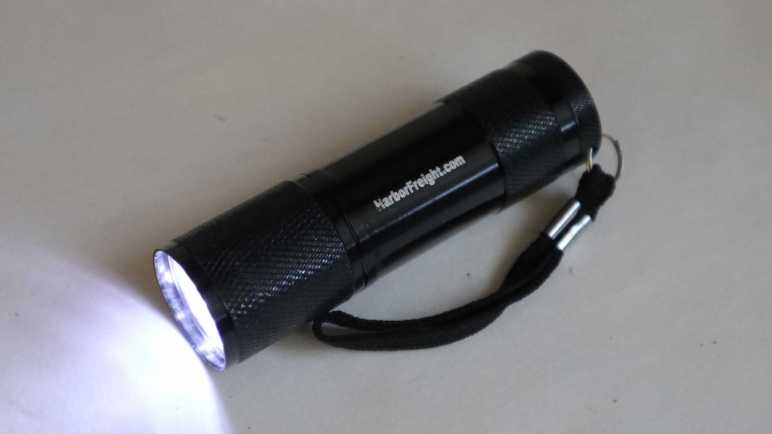I want to learn CadQuery to see if I can use it for my 3D printing projects, but at the moment I’m drawing a blank for a good project to climb the learning curve with. I looked over my teardown queue for potential inspiration and decided to take apart a Harbor Freight mini LED flashlight. This was one of the items they used to give away “Free with Purchase” to entice people like me to stop in, so it must have been made cheaply even by Harbor Freight standards. A good item to compare & contrast with an earlier giveaway keychain LED teardown.
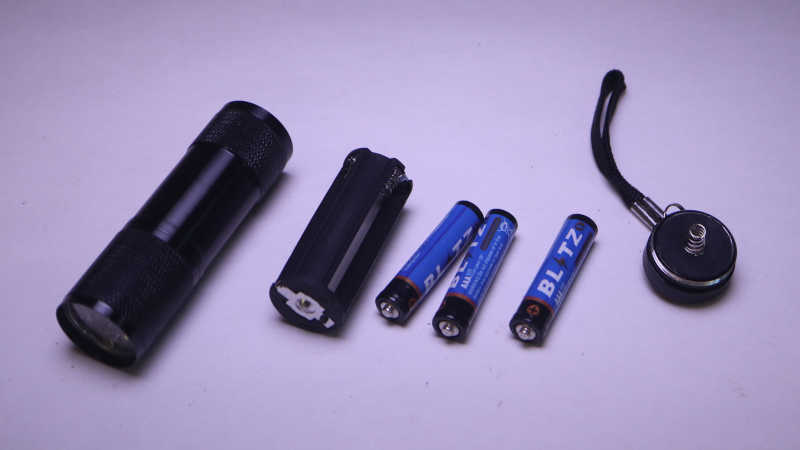
The push button switch at the end unscrews to release a battery tray holding three AAA batteries. Given Harbor Freight price points, it’s not a surprise these batteries inevitably leak and destroy the device. I have several of these little flashlights and I picked this one as it had yet to corrode. The trio of batteries were wired in series, for a theoretical maximum of 3 * 1.5V = 4.5V.
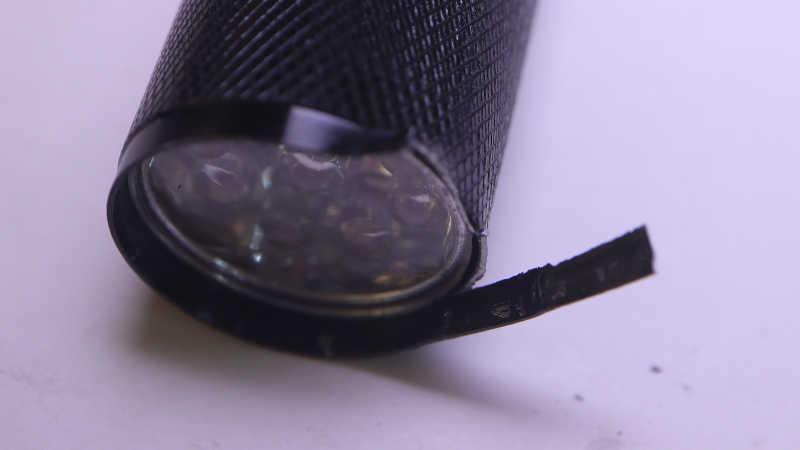
I found no fasteners on the head of the device, nor any signs of glue, so it might be held together by friction alone. I pulled out my pliers and the thin metal construction could be peeled apart. It seems to be roughly the thickness of a food can, but peels much more easily, so probably aluminum instead of steel.
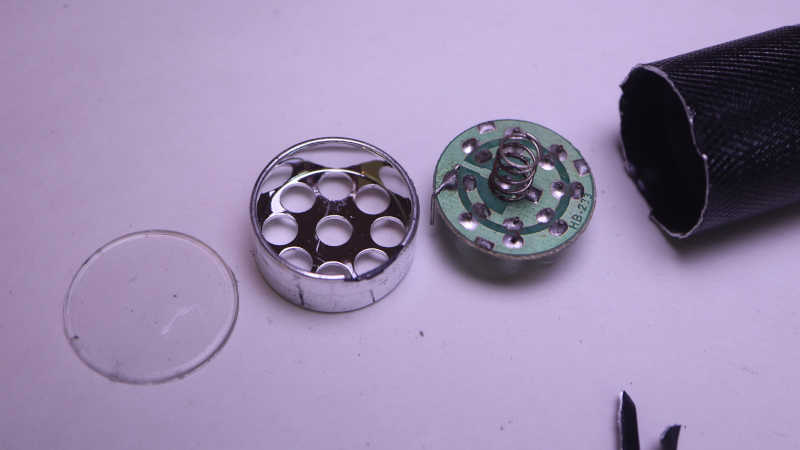
After unrolling that lip, I could remove the clear plastic cover, the shiny plastic reflector, and a circuit board with nine 5mm white LEDs soldered in parallel. There were no signs of a current-limiting resistor, so this design must have been dependent on cheap alkaline AAA battery internal resistance to keep this thing from burning itself up.
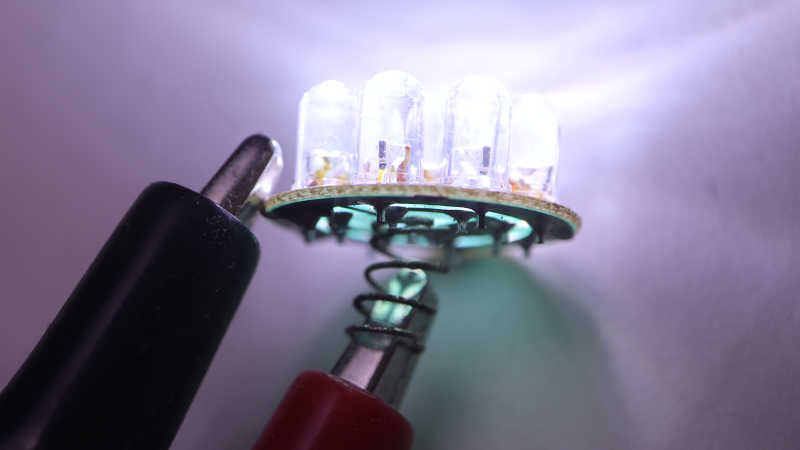
Connected to my bench power supply, I gradually dialed up the voltage delivered to this array of nine LEDs. At just under 3.3V, the power supply reported supplying 9 * 20mA = 180mA of current. I guess three cheap alkaline AAAs asked to supply 180mA would sag to 3.3V or less. Either that or the designer of this cost-optimized design decided they don’t care if these LEDs burn out.
